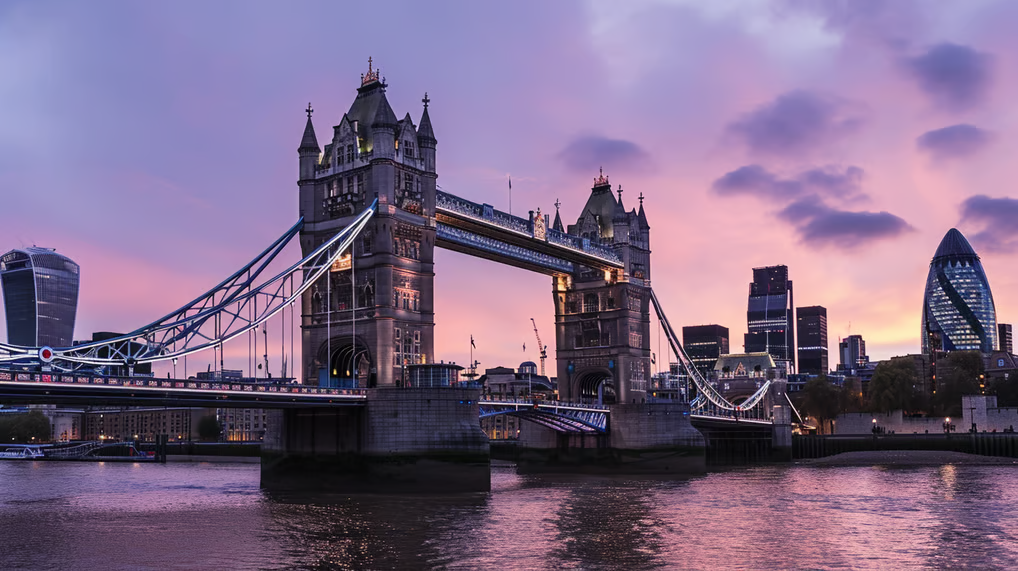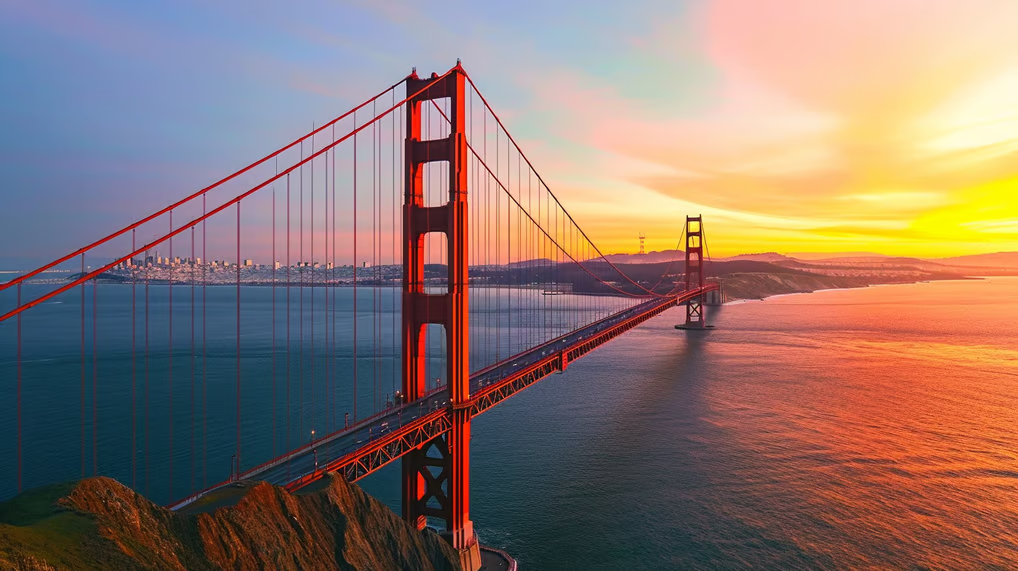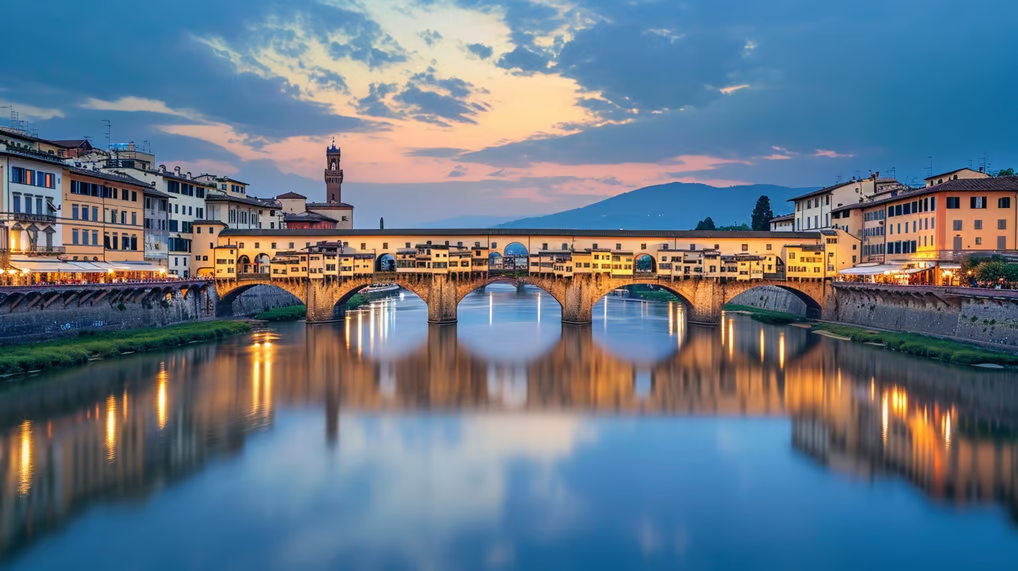Bridging Time: A Journey Across the World's Most Historic Bridges
Traverse the spans of time as you journey across the world's most historic bridges, each an architectural marvel, telling stories of human ingenuity, resilience, and the timeless quest to connect and conquer boundaries.

Have you ever marveled at the sight of a majestic bridge and wondered about its significance? Bridges have played a vital role throughout history, connecting people, cultures, and commerce across vast distances. Join us on a captivating journey as we explore some of the world's most historic bridges and unravel the stories behind their construction and significance.
Understanding the Importance of Bridges in History
Throughout time, bridges have been essential for human progress. One of the most crucial roles bridges have played is facilitating trade and commerce. Ancient civilizations realized that bridges provided a valuable means to transport goods and establish vital trade routes. The construction of these bridges helped foster economic growth and cultural exchange.
Bridges have also become symbols of human ingenuity and engineering marvels. Crossing these structures not only allowed people to physically traverse rivers, valleys, and other obstacles but also bridged the gap between cultures and communities. These magnificent structures stand as a testament to human perseverance and creativity.
Let's delve deeper into the significance of bridges in history. In ancient times, the construction of bridges marked a turning point in human civilization. Prior to their existence, crossing rivers and other natural barriers was a daunting task. People had to rely on primitive methods such as makeshift rafts or fording through shallow waters. However, with the advent of bridges, a whole new world of possibilities opened up.
Imagine the impact of a bridge on a bustling trade route. It not only provided a safe and efficient means of transportation but also acted as a meeting point for merchants from different regions. This convergence of diverse cultures and ideas led to the exchange of goods, knowledge, and technologies. The bridge became a hub of activity, fostering economic growth and societal development.
Furthermore, bridges served as symbols of power and prestige for ruling empires. The construction of monumental bridges was often seen as a display of a ruler's wealth and influence. These grand structures were not only functional but also served as architectural masterpieces. They showcased the engineering prowess and artistic skills of the civilization, leaving a lasting impression on all who beheld them.
As time progressed, bridges continued to evolve in design and construction techniques. From simple wooden structures to sophisticated stone arches, engineers pushed the boundaries of what was possible. The development of new materials and engineering principles allowed for the creation of longer, stronger, and more aesthetically pleasing bridges.
One such example is the iconic Golden Gate Bridge in San Francisco, California. Completed in 1937, this suspension bridge spans the Golden Gate Strait, connecting the city to Marin County. Its distinctive orange-red color and graceful curves have made it an internationally recognized symbol of engineering excellence.
Today, bridges continue to play a vital role in connecting communities and facilitating transportation. They have become integral parts of modern infrastructure, enabling the smooth flow of goods and people. From towering suspension bridges to elegant cable-stayed structures, these engineering marvels continue to captivate our imagination and inspire future generations.

The Architectural Marvels of Ancient Bridges
Among the ancient world's engineering wonders are the Roman aqueducts. These impressive structures, built with stone arches, not only supplied water to cities but also served as passageways for people and goods. The Pont du Gard in France and the Aqueduct of Segovia in Spain are prime examples of the ingenuity and lasting impact of Roman bridge builders.
In the heart of China, spanning serene landscapes and bustling townships, lie the breathtaking covered bridges. These architectural marvels served as both bridges and public spaces, providing shelter and gathering spots for locals. The picturesque bridges of Wuzhen and Fenghuang stand as cultural gems, preserving the legacy of Chinese bridge building.
Let us delve deeper into the fascinating world of ancient bridges and explore the intricate details of these architectural marvels.
The Pont du Gard, located in the south of France, is a testament to the engineering prowess of the ancient Romans. This three-tiered aqueduct bridge, constructed in the 1st century AD, stands as a magnificent example of Roman architecture. The bridge spans the Gardon River, carrying water from the Eure spring to the city of Nemausus (modern-day Nîmes). The precision and craftsmanship involved in building this structure are awe-inspiring. The massive stone blocks, meticulously fitted together without the use of mortar, showcase the Romans' mastery of construction techniques.
Not far from the Pont du Gard, in the historic city of Segovia, Spain, stands another remarkable Roman aqueduct. The Aqueduct of Segovia, built in the 1st century AD, is a marvel of engineering and a symbol of the city's rich history. The aqueduct stretches over 800 meters, with its highest point reaching a towering 28.5 meters. The precision of the arches, constructed with granite blocks, is a testament to the Romans' understanding of structural stability. The aqueduct's impressive preservation over the centuries is a testament to the durability of Roman engineering.
Now, let us turn our attention to the enchanting covered bridges of China. These architectural wonders not only serve as functional crossings but also hold great cultural significance. Wuzhen, a water town in eastern China, is home to several stunning covered bridges. The most famous among them is the Tongji Bridge, which dates back to the Ming Dynasty. This elegant bridge, with its distinctive curved roof and intricate carvings, is a masterpiece of Chinese craftsmanship. Walking across the bridge, one can't help but be transported back in time, imagining the bustling trade and vibrant community that once thrived in this ancient town.
Further south, in the picturesque town of Fenghuang, lies the beautiful Hong Bridge. This covered bridge, also known as the Rainbow Bridge, is a symbol of Fenghuang's rich cultural heritage. Built during the Qing Dynasty, the bridge features a unique combination of Chinese and Western architectural elements. The vibrant colors adorning the bridge's roof, along with the intricate wood carvings, create a mesmerizing sight. As one strolls across the Hong Bridge, the sound of flowing water and the surrounding traditional houses evoke a sense of tranquility and nostalgia.
These ancient bridges not only showcase the architectural brilliance of their respective civilizations but also serve as reminders of the rich history and cultural heritage they represent. Whether it's the grandeur of the Roman aqueducts or the charm of the Chinese covered bridges, these architectural marvels continue to captivate and inspire visitors from around the world.
The Evolution of Bridge Design and Construction
Over time, bridge builders experimented with different materials, marking significant milestones in bridge design and construction. From the sturdy stone bridges of ancient times to the revolutionary use of steel, the choice of materials propelled bridge engineering to new heights.
Suspension bridges, like the iconic Brooklyn Bridge in New York City, emerged as a remarkable engineering feat in the 19th century. These bridges, supported by sturdy cables and majestic towers, transformed the way we cross vast bodies of water. Cantilever bridges, such as Firth of Forth Bridge in Scotland, pushed the boundaries of bridge design further, offering unprecedented stability and strength.
As the demand for bridge construction increased, engineers began to explore new techniques and materials to meet the growing needs of transportation. One such technique that gained popularity was the use of arches in bridge design. Arches distribute the weight of the bridge evenly, allowing for longer spans and greater load-bearing capacity. The Pont du Gard in France, a Roman aqueduct bridge, is a prime example of the early use of arches in bridge construction. Its impressive structure, consisting of three tiers of arches, has stood the test of time for over 2,000 years.
With the advent of the Industrial Revolution in the 18th century, bridge construction underwent a dramatic transformation. The discovery and widespread use of steel revolutionized the field, enabling engineers to create bridges of unprecedented strength and durability. The Forth Bridge in Scotland, completed in 1890, is a testament to the power of steel in bridge construction. Its intricate lattice structure, made entirely of steel, spans over 2.5 kilometers and stands as a marvel of engineering.
Advancements in materials and construction techniques also led to the development of truss bridges. Truss bridges, characterized by their triangular framework, offer exceptional strength and rigidity. The Iron Bridge in Shropshire, England, built in 1779, is considered the first major bridge to be constructed using truss design. Its innovative use of cast iron in combination with the truss framework revolutionized bridge construction and set the stage for future developments.
With the rise of modern engineering, bridge designers have continued to push the boundaries of what is possible. Cable-stayed bridges, such as the Millau Viaduct in France, have become increasingly popular due to their elegant design and efficient use of materials. These bridges feature tall towers from which cables extend to support the bridge deck, creating a visually stunning and structurally sound solution.
Another notable development in bridge design is the use of composite materials. Composite bridges combine different materials, such as concrete and steel, to take advantage of their individual strengths. This approach allows engineers to optimize the performance of the bridge while minimizing its weight and environmental impact. The Stonecutters Bridge in Hong Kong, completed in 2009, is a prime example of a composite bridge that showcases the possibilities of modern bridge construction.
As technology continues to advance, the future of bridge design and construction holds even more exciting possibilities. From the exploration of new materials, such as carbon fiber and advanced polymers, to the integration of smart technologies for real-time monitoring and maintenance, the evolution of bridges is far from over. Each new development brings us closer to creating bridges that are not only functional and safe but also visually stunning and environmentally sustainable.

Iconic Bridges and Their Stories
The Tower Bridge in London stands as a symbol of engineering brilliance and the city's rich history. This majestic structure not only allows for the smooth flow of water traffic along the River Thames but also provides a stunning vantage point for visitors to take in the city's vibrant skyline.
The Tower Bridge, completed in 1894, is an iconic landmark that has become synonymous with London. Its distinctive design, featuring two towers connected by a walkway and a bascule bridge, was a marvel of engineering at the time. The bridge was constructed to accommodate the increasing commercial activity along the River Thames, providing a vital link between the north and south banks of the city.
One fascinating aspect of the Tower Bridge is its ability to open and allow tall ships to pass through. The bascule bridge mechanism, powered by steam engines in the past and now by electricity, lifts the central section of the bridge to an angle of 86 degrees, creating a clear passage for vessels. This unique feature has made the Tower Bridge a popular tourist attraction, as visitors can witness the bridge opening and closing, marveling at the engineering ingenuity that allows for seamless navigation.
On the other side of the Atlantic Ocean, the Golden Gate Bridge in San Francisco beckons tourists and locals alike. With its striking art deco design and vibrant orange hue, this American landmark connects the city to Marin County and offers breathtaking views of the Pacific Ocean.
The Golden Gate Bridge, completed in 1937, is an architectural marvel that has become an iconic symbol of San Francisco. Spanning 1.7 miles across the Golden Gate Strait, the bridge was a monumental feat of engineering at the time of its construction. Its distinctive orange-red color, known as "International Orange," was chosen to enhance its visibility in the foggy conditions often experienced in the area.
Walking or driving across the Golden Gate Bridge is an awe-inspiring experience. The bridge's towering suspension cables and graceful curves create a sense of grandeur, while the panoramic views of the city skyline and the vast expanse of the Pacific Ocean leave visitors in awe. The bridge also offers pedestrian walkways and bike lanes, allowing people to leisurely explore the bridge and enjoy the stunning scenery.
Both the Tower Bridge in London and the Golden Gate Bridge in San Francisco are not just remarkable engineering achievements but also beloved symbols of their respective cities. They have stood the test of time, captivating the imaginations of people from around the world and serving as enduring reminders of human ingenuity and the power of architectural beauty.
The Future of Bridge Construction
As we venture into the future, bridge engineering continues to push boundaries and embrace innovation. New materials and construction techniques allow for sustainable and eco-friendly bridge designs that harmonize with the environment.
From the Netherlands' floating bridges to the green infrastructure initiatives in Scandinavian countries, sustainability is at the forefront of contemporary bridge construction. These innovative designs not only reduce environmental impact but also contribute to the overall beautification of cities.
A Journey Through Time and Space
Embarking on this journey across the world's most historic bridges, we witness the transformative power of these structures. From the ancient bridge builders of Rome and China to the modern-day visionaries pushing the boundaries of engineering, bridges continue to bridge the gap between people and places, connecting us in ways beyond their physical presence.
So, the next time you find yourself crossing a bridge, take a moment to appreciate the rich history and remarkable engineering that brought it to life. Let these bridges serve as reminders of human ingenuity and the potential to overcome any obstacle in our path.
Join us as we continue to explore the world's remarkable architectural wonders, where every step reveals tales of triumph, culture, and the power of imagination.